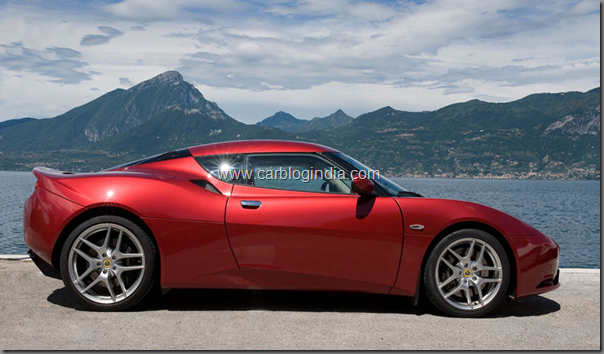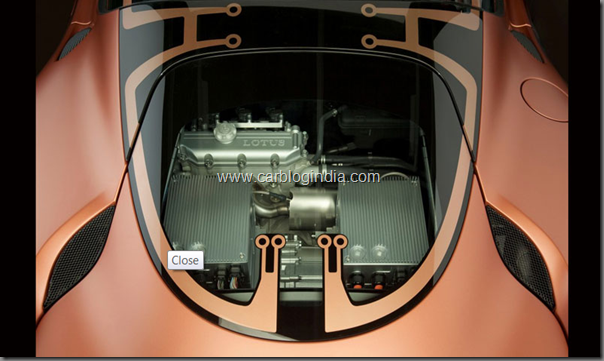Ahead of Geneva Motor Show 2010 , Lotus has declared its upcoming Hybrid Concept Car – The 2010 Lotus Evora 414 Hybrid through an official press release.
Specification Of Lotus Evora 414 Hybrid
The 2010 Lotus Evora 414 Hybrid features an impressive 408 BHP power. Its a series hybrid, which means that it only runs on Electric power in direct sense and the gasoline engine which is a 1.2 Litre range extending engine is only to charge the batteries and not run the wheels of the car directly. The range of Evora 414 is whooping 300 miles.
Highlights of the Evora 414 are :
0-60 mph/97 kph in under 4 seconds
Total hybrid range of over 300 miles/483 kilometres
Eco mode or Sports mode featuring realistic 7 speed paddle shift with energy recuperation
HALOsonic Internal and External Electronic Sound Synthesis
Torque vectoring for improved dynamic stability
Integrated glass roof and engine cover and interior concept from Lotus Design
As per the official press release
The Lotus Evora 414E Hybrid, so-named because this latest environmentally-focused technology demonstrator from Lotus Engineering produces 414 PS (306 kW) of power, promises breathtaking performance from a highly efficient propulsion system. The concept showcases new developments in plug-in, range-extended electric propulsion, new electronic technologies to enhance driver involvement, the adaptability of the Lotus Versatile Vehicle Architecture (VVA) that underpins the Evora 414E Hybrid and a dramatic new roof system and interior concept from Lotus Design. Through all of these aspects it ultimately demonstrates the exceptional ability of Lotus Engineering to integrate and develop advanced technologies for exciting, efficient, high performance niche vehicles.
Some facts about Evora Drive Train
For the Lotus Evora 414E Hybrid, Lotus Engineering has developed a highly efficient, high performance drivetrain system consisting of twin motors each limited to providing 152 kW (207 PS/204 hp) of power and 400 Nm (295 lbft) of torque to each wheel via independent, single speed, reduction transmissions integrated into a single housing, enabling torque vectoring dynamic control of the vehicle.
If you travel small distances within the city, this will sound pleasant to you:
For everyday commuting journeys, up to 35 miles can be travelled using battery power. The battery can be charged overnight using a conventional domestic mains supply through a socket concealed by the rear number plate. This permits the vehicle to operate with zero tailpipe emissions. For longer journeys, exceeding the battery capacity, the highly efficient range extender engine is used as a generator to supply the motor with electrical power and top up the battery.



